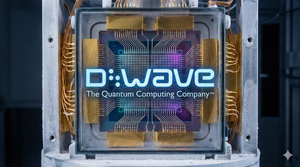
Washington D.C., October 8, 2025 – The United States is on the cusp of a monumental shift in global semiconductor manufacturing, projected to lead worldwide chip plant investment by 2027. This ambitious trajectory, largely fueled by the landmark CHIPS and Science Act of 2022, signifies a profound reordering of the industry's landscape, aiming to bolster national security, fortify supply chain resilience, and cement American leadership in the era of artificial intelligence (AI).
This strategic pivot moves beyond mere economic ambition, representing a concerted effort to mitigate vulnerabilities exposed by past global chip shortages and escalating geopolitical tensions. The immediate significance is multi-faceted: a stronger domestic supply chain promises enhanced national security, reducing reliance on foreign production for critical technologies. Economically, this surge in investment is already creating hundreds of thousands of jobs and fueling significant private sector commitments, positioning the U.S. to reclaim its leadership in advanced microelectronics, which are indispensable for the future of AI and other cutting-edge technologies.
The Technological Crucible: Billions Poured into Next-Gen Fabs
The CHIPS and Science Act, enacted in August 2022, is the primary catalyst behind this projected leadership. It authorizes approximately $280 billion in new funding, including $52.7 billion directly for domestic semiconductor research, development, and manufacturing subsidies, alongside a 25% advanced manufacturing investment tax credit. This unprecedented government-led industrial policy has spurred well over half a trillion dollars in announced private sector investments across the entire chip supply chain.
Major global players are anchoring this transformation. Taiwan Semiconductor Manufacturing Company (TSM:NYSE), the world's largest contract chipmaker, has committed over $65 billion to establish three greenfield leading-edge fabrication plants (fabs) in Phoenix, Arizona. Its first fab is expected to begin production of 4nm FinFET process technology by the first half of 2025, with the second fab targeting 3nm and then 2nm nanosheet process technology by 2028. A third fab is planned for even more advanced processes by the end of the decade. Similarly, Intel (INTC:NASDAQ), a significant recipient of CHIPS Act funding with up to $7.865 billion in direct support, is pursuing an ambitious expansion plan exceeding $100 billion. This includes constructing new leading-edge logic fabs in Arizona and Ohio, focusing on its Intel 18A technology (featuring RibbonFET gate-all-around transistor technology) and the Intel 14A node. Samsung Electronics (005930:KRX) has also announced up to $6.4 billion in direct funding and plans to invest over $40 billion in Central Texas, including two new leading-edge logic fabs and an R&D facility for 4nm and 2nm process technologies. Amkor Technology (AMKR:NASDAQ) is investing $7 billion in Arizona for an advanced packaging and test campus, set to begin production in early 2028, marking the first U.S.-based high-volume advanced packaging facility.
This differs significantly from previous global manufacturing approaches, which saw advanced chip production heavily concentrated in East Asia due to cost efficiencies. The CHIPS Act prioritizes onshoring and reshoring, directly incentivizing domestic production to build supply chain resilience and enhance national security. The strategic thrust is on regaining leadership in leading-edge logic chips (5nm and below), critical for AI and high-performance computing. Furthermore, companies receiving CHIPS Act funding are subject to "guardrail provisions," prohibiting them from expanding advanced semiconductor manufacturing in "countries of concern" for a decade, a direct counter to previous models of unhindered global expansion. Initial reactions from the AI research community and industry experts have been largely positive, viewing these advancements as "foundational to the continued advancement of artificial intelligence," though concerns about talent shortages and the high costs of domestic production persist.
AI's New Foundry: Impact on Tech Giants and Startups
The projected U.S. leadership in chip plant investment by 2027 will profoundly reshape the competitive landscape for AI companies, tech giants, and burgeoning startups. A more stable and accessible supply of advanced, domestically produced semiconductors is a game-changer for AI development and deployment.
Major tech giants, often referred to as "hyperscalers," stand to benefit immensely. Companies like Google (GOOGL:NASDAQ), Microsoft (MSFT:NASDAQ), and Amazon (AMZN:NASDAQ) are increasingly designing their own custom silicon—such as Google's Tensor Processing Units (TPUs), Amazon's Graviton processors, and Microsoft's Azure Maia chips. Increased domestic manufacturing capacity directly supports these in-house efforts, reducing their dependence on external suppliers and enhancing supply chain predictability. This vertical integration allows them to tailor hardware precisely to their software and AI models, yielding significant performance and efficiency advantages. The competitive implications are clear: proprietary chips optimized for specific AI workloads are becoming a critical differentiator, accelerating innovation cycles and consolidating strategic advantages.
For AI startups, while not directly investing in fabrication, the downstream effects are largely positive. A more stable and potentially lower-cost access to advanced computing power from cloud providers, which are powered by these new fabs, creates a more favorable environment for innovation. The CHIPS Act's funding for R&D and workforce development also strengthens the overall ecosystem, indirectly benefiting startups through a larger pool of skilled talent and potential grants for innovative semiconductor technologies. However, challenges remain, particularly if the higher initial costs of U.S.-based manufacturing translate to increased prices for cloud services, potentially burdening budget-conscious startups.
Companies like NVIDIA (NVDA:NASDAQ), the undisputed leader in AI GPUs, AMD (AMD:NASDAQ), and the aforementioned Intel (INTC:NASDAQ), TSMC (TSM:NYSE), and Samsung (005930:KRX) are poised to be primary beneficiaries. Broadcom (AVGO:NASDAQ) is also solidifying its position in custom AI ASICs. This intensified competition in the semiconductor space is fostering a "talent war" for skilled engineers and researchers, while simultaneously reducing supply chain risks for products and services reliant on advanced chips. The move towards localized production and vertical integration signifies a profound shift, positioning the U.S. to capitalize on the "AI supercycle" and reinforcing semiconductors as a core enabler of national power.
A New Industrial Revolution: Wider Significance and Geopolitical Chessboard
The projected U.S. leadership in global chip plant investment by 2027 is more than an economic initiative; it's a profound strategic reorientation with far-reaching geopolitical and economic implications, akin to past industrial revolutions. This drive is intrinsically linked to the broader AI landscape, as advanced semiconductors are the indispensable hardware powering the next generation of AI models and applications.
Geopolitically, this move is a direct response to vulnerabilities in the global semiconductor supply chain, historically concentrated in East Asia. By boosting domestic production, the U.S. aims to reduce its reliance on foreign suppliers, particularly from geopolitical rivals, thereby strengthening national security and ensuring access to critical technologies for military and commercial purposes. This effort contributes to what some experts term a "Silicon Curtain," intensifying techno-nationalism and potentially leading to a bifurcated global AI ecosystem, especially concerning China. The CHIPS Act's guardrail provisions, restricting expansion in "countries of concern," underscore this strategic competition.
Economically, the impact is immense. The CHIPS Act has already spurred over $450 billion in private investments, creating an estimated 185,000 temporary construction jobs annually and projected to generate 280,000 enduring jobs by 2027, with 42,000 directly in the semiconductor industry. This is estimated to add $24.6 billion annually to the U.S. economy during the build-out period and reduce the semiconductor trade deficit by $50 billion annually. The focus on R&D, with a projected 25% increase in spending by 2025, is crucial for maintaining a competitive edge in advanced chip design and manufacturing.
Comparing this to previous milestones, the current drive for U.S. leadership in chip manufacturing echoes the strategic importance of the Space Race or the investments made during the Cold War. Just as control over aerospace and defense technologies was paramount, control over semiconductor supply chains is now seen as essential for national power and economic competitiveness in the 21st century. The COVID-19 pandemic's chip shortages served as a stark reminder of these vulnerabilities, directly prompting the current strategic investments. However, concerns persist regarding a critical talent shortage, with a projected gap of 67,000 workers by 2030, and the higher operational costs of U.S.-based manufacturing compared to Asian counterparts.
The Road Ahead: Future Developments and Expert Outlook
Looking beyond 2027, the U.S. is projected to more than triple its semiconductor manufacturing capacity between 2022 and 2032, achieving the highest growth rate globally. This expansion will solidify regional manufacturing hubs in Arizona, New York, and Texas, enhancing supply chain resilience and fostering distributed networks. A significant long-term development will be the U.S. leadership in advanced packaging technologies, crucial for overcoming traditional scaling limitations and meeting the increasing computational demands of AI.
The future of AI will be deeply intertwined with these semiconductor advancements. High-performance chips will fuel increasingly complex AI models, including large language models and generative AI, which is expected to contribute an additional $300 billion to the global semiconductor market by 2030. These chips will power next-generation data centers, autonomous systems (vehicles, drones), advanced 5G/6G communications, and innovations in healthcare and defense. AI itself is becoming the "backbone of innovation" in semiconductor manufacturing, streamlining chip design, optimizing production efficiency, and improving quality control. Experts predict the global AI chip market will surpass $150 billion in sales in 2025, potentially reaching nearly $300 billion by 2030.
However, challenges remain. The projected talent gap of 67,000 workers by 2030 necessitates sustained investment in STEM programs and apprenticeships. The high costs of building and operating fabs in the U.S. compared to Asia will require continued policy support, including potential extensions of the Advanced Manufacturing Investment Credit beyond its scheduled 2026 expiration. Global competition, particularly from China, and ongoing geopolitical risks will demand careful navigation of trade and national security policies. Experts also caution about potential market oversaturation or a "first plateau" in AI chip demand if profitable use cases don't sufficiently develop to justify massive infrastructure investments.
A New Era of Silicon Power: A Comprehensive Wrap-Up
By 2027, the United States will have fundamentally reshaped its role in the global semiconductor industry, transitioning from a significant consumer to a leading producer of cutting-edge chips. This strategic transformation, driven by over half a trillion dollars in public and private investment, marks a pivotal moment in both AI history and the broader tech landscape.
The key takeaways are clear: a massive influx of investment is rapidly expanding U.S. chip manufacturing capacity, particularly for advanced nodes like 2nm and 3nm. This reshoring effort is creating vital domestic hubs, reducing foreign dependency, and directly fueling the "AI supercycle" by ensuring a secure supply of the computational power essential for next-generation AI. This development's significance in AI history cannot be overstated; it provides the foundational hardware for sustained innovation, enabling more complex models and widespread AI adoption across every sector. For the broader tech industry, it promises enhanced supply chain resilience, reducing vulnerabilities that have plagued global markets.
The long-term impact is poised to be transformative, leading to enhanced national and economic security, sustained innovation in AI and beyond, and a rebalancing of global manufacturing power. While challenges such as workforce shortages, higher operational costs, and intense global competition persist, the commitment to domestic production signals a profound and enduring shift.
In the coming weeks and months, watch for further announcements of CHIPS Act funding allocations and specific project milestones from companies like Intel, TSMC, Samsung, Micron, and Amkor. Legislative discussions around extending the Advanced Manufacturing Investment Credit will be crucial. Pay close attention to the progress of workforce development initiatives, as a skilled labor force is paramount to success. Finally, monitor geopolitical developments and any shifts in AI chip architecture and innovation, as these will continue to define America's new era of silicon power.
This content is intended for informational purposes only and represents analysis of current AI developments.
TokenRing AI delivers enterprise-grade solutions for multi-agent AI workflow orchestration, AI-powered development tools, and seamless remote collaboration platforms.
For more information, visit https://www.tokenring.ai/.






